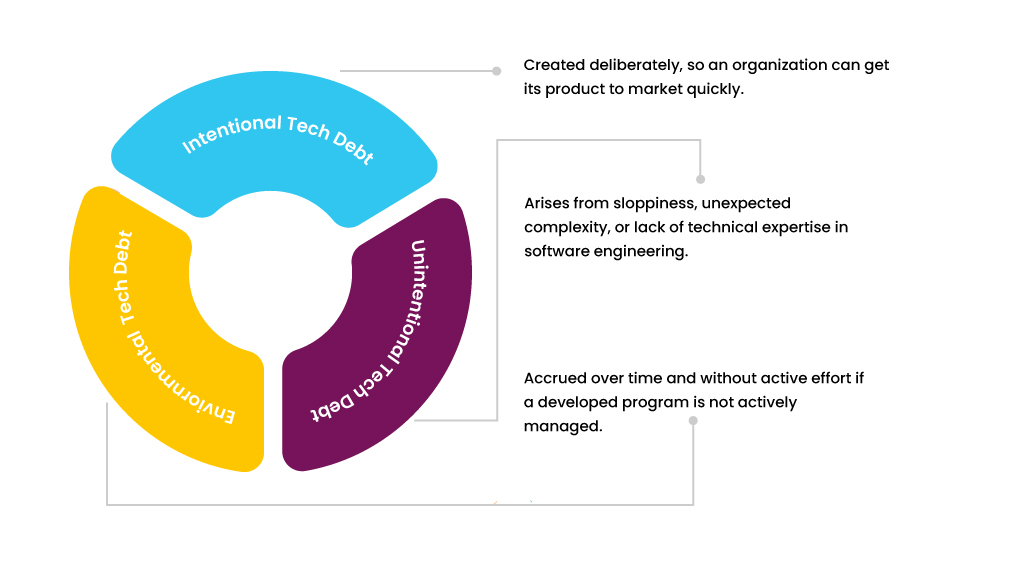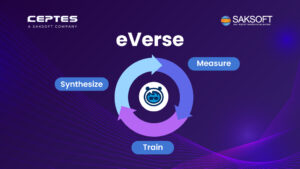Imagine you’re building a skyscraper. To meet deadlines, you use quick, temporary materials for some sections, thinking you’ll replace them later. But as the building gets taller, those temporary fixes start showing cracks. The foundation isn’t as strong as it should be, making every new addition riskier and more expensive.
That is exactly what we call ‘Technical Debt’ in software development. And, Technical Debt in Salesforce typically arises from implementing ‘shortcuts’ as you customize your Org. Salesforce offers flexibility that makes it easy to create new customizations instead of optimizing existing ones. This quick-fix approach may solve immediate issues but often leads to long-term complexity, inefficiencies, and extra work for your team.

For business leaders and decision-makers, understanding Salesforce technical debt is crucial. Left unchecked, it can drag down innovation, impact customer experience, and increase operational costs. But when managed wisely, it can be a strategic tool for agility and growth.
Types of Technical Debt:
Just like financial debt, Technical Debt accumulates over time—requiring “interest payments” in the form of extra work, maintenance, and rework. Salesforce Technical debt manifests in various ways, such as –
- Intentional tech debt: A deliberate trade-off to speed up delivery, accepting known risks. Example: Shipping a product without full test coverage to meet a launch deadline, planning to fix issues later.
- Unintentional tech debt: Arises from rushed work, lack of expertise, or unforeseen complexity. Example: A last-minute feature addition introduces security flaws due to inadequate testing.
- Environmental debt: Arises when well-developed code becomes outdated due to external changes, such as evolving technology, infrastructure updates, or regulatory shifts, rather than issues within the code itself. Example: A legacy app breaks after a cloud provider updates its APIs, requiring urgent fixes.

What Causes Technical Debt in Salesforce?
Technical debt in Salesforce often builds up due to rapid implementations, evolving business needs, and limited expertise. Imagine a fast-growing company that relies heavily on Salesforce to manage its sales, marketing, and customer service operations. Over the years, a dedicated admin becomes the go-to person for everything Salesforce. But then one day he decides to move on with a new opportunity leaving behind a tangled mess of custom workflows, Apex triggers, outdated reports, and undocumented integrations. Without proper documentation or shared knowledge, what was once a well-oiled machine turns into a time-consuming puzzle. As organizations scale, shortcuts and compromises lead to inefficiencies, making future development and maintenance increasingly complex.
Apart from this, there are several factors that contribute to increasing Salesforce technical debt, including:
1. Emerging Digital Forces
Businesses constantly adapt to Salesforce innovations like AI, automation, and industry clouds, often implementing them hastily without long-term architectural planning.
2. Customization Overload –
Overuse of custom code, complex workflows, and unmanaged packages can lead to a cluttered org that’s difficult to scale and maintain.
3. Limited Time & Resources –
IT teams often face aggressive deadlines, forcing them to prioritize speed over best practices, leading to poorly documented configurations and technical shortcuts.
4. Low Documentation & Knowledge Silos –
Many Salesforce orgs rely on a small team or a single admin, causing knowledge gaps when key personnel leave.
5. Integration Challenges –
Connecting Salesforce with third-party systems and legacy applications can introduce inconsistent data flows and dependencies, increasing system complexity.
6. Frequent Updates & Releases –
Salesforce’s frequent (thrice a year) updates, while beneficial, can disrupt existing customizations if not proactively managed.
Preventing & Managing Technical Debt:
Managing technical debt isn’t just about fixing old code— it’s about shifting how teams approach development and long-term planning. Instead of reacting to issues, businesses must proactively invest in scalable processes, ensuring their Salesforce org remains an asset, not a liability.
1. Adopt a “Debt-Conscious” Culture
- Recognize that some debt is inevitable, but excessive debt is dangerous.
- Educate teams on the trade-offs between short-term gains and long-term sustainability.
2. Prioritize Code Reviews & Best Practices
- Implement strict code review processes to ensure quality.
- Enforce coding standards and reusable frameworks.
3. Refactor Regularly
- Set aside dedicated sprints for refactoring old code.
- Continuously optimize automation, processes, and integrations.
4. Monitor & Track Technical Debt
- Use Salesforce DevOps tools to assess system health.
- Maintain a backlog of tech debt and track progress on paying it down.
5. Invest in Scalable Architecture
- Design with flexibility in mind, leveraging best-in-class Salesforce architecture principles.
- Avoid excessive custom coding when declarative solutions work just as well.
Real World Example Of Tackling Tech Debt
A global cloud security leader faced challenges with their complex Salesforce ecosystem. With 10+ global teams and an extensive Salesforce ecosystem – the company was facing major performance bottlenecks and scalability issues, eventually leading to overloaded technical debt, making innovation slow and maintenance costly.
The company managed to turn things around by modernising their Salesforce architecture. Legacy VF/Aura components were upgraded to LWCs, Apex was streamlined into Flows, and unnecessary metadata was removed. An integration framework was built to handle data more efficiently, while batch jobs were optimized to run off-hours.
The results? A 50% drop in governor limit exceptions, 30% faster system performance, and a 40% reduction in integration errors. By strategically eliminating tech debt, they not only improved efficiency but also set up their Salesforce org for long-term scalability and success.
Wrapping Up:
Technical debt is an inevitable part of software development, but how you manage it determines whether it becomes a strategic advantage or a long-term burden. As Ward Cunningham (coined the term ‘Tech debt’) put it using a financial analogy – “With borrowed money you can do something sooner than you might otherwise, but then until you pay back that money you’ll be paying interest.” Similarly, ignoring tech debt may speed up delivery today, but it compounds over time, making future changes more expensive and complex.
Recently we conducted a podcast with our CEO, Mr. Priya Ranjan Panigrahy where we discussed Technical Debt in detail, how it impacts business growth and what action plans companies need to embrace to minimize tech debt in the long run.
At CEPTES, we help businesses tackle technical debt in Salesforce by optimizing their systems, modernizing architecture, and implementing best practices. Want to reduce friction and accelerate innovation? Contact us today and start clearing your technical debt!
FAQ:
1. Is technical debt good or bad?
2. What is the 80/20 rule for tech debt?
3. How to measure technical debt?
4. How much time should I allocate to technical debt?

Nilamani Das
Nilamani is a thought leader who champions the integration of AI, Data, CRM and Trust to craft impactful marketing strategies. He carries 25+ years of expertise in the technology industry with expertise in Go-to-Market Strategy, Marketing, Digital Transformation, Vision Development and Business Innovation.


















